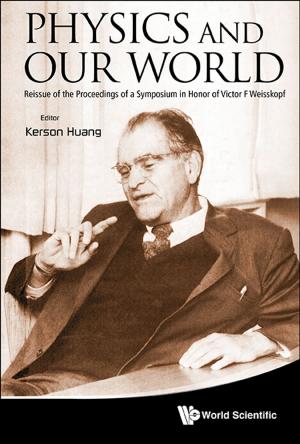Mathematical Methods for Mechanical Sciences
Nonfiction, Science & Nature, Mathematics, Applied, Technology| Author: | Michael Howe | ISBN: | 9781783266661 |
| Publisher: | World Scientific Publishing Company | Publication: | August 5, 2015 |
| Imprint: | ICP | Language: | English |
| Author: | Michael Howe |
| ISBN: | 9781783266661 |
| Publisher: | World Scientific Publishing Company |
| Publication: | August 5, 2015 |
| Imprint: | ICP |
| Language: | English |
A mathematical model of a physical system provides the engineer with the insight and intuitive understanding required to make efficient system design changes or other modifications. In this context, a simple formula is often worth a thousand numerical simulations, and connections between different control parameters can be immediately revealed that might otherwise take hours or weeks to deduce from a computational analysis. This book supplies the undergraduate engineer with the basic mathematical tools for developing and understanding such models, and is also suitable as a review for engineering graduate students. A firm grasp of the topics covered will also enable the working engineer (educated to bachelor's degree level) to understand, write and otherwise make sensible use of technical reports and papers.
Contents:
- Linear Ordinary Differential Equations
- Vector Calculus
- Complex Variables
- Partial Differential Equations
- Special Functions
- Matrix Algebra and Linear Equations
- Variational Calculus
Readership: Engineering graduate and undergraduate students, and working engineers.
Key Features:
- Equips the undergraduate engineer with the basic mathematical tools for developing and understanding mathematical models of physical systems
- Enables the working engineer to understand, write and effectively utilise technical reports and papers
- Forms a compact review suitable for first-year engineering graduate students
A mathematical model of a physical system provides the engineer with the insight and intuitive understanding required to make efficient system design changes or other modifications. In this context, a simple formula is often worth a thousand numerical simulations, and connections between different control parameters can be immediately revealed that might otherwise take hours or weeks to deduce from a computational analysis. This book supplies the undergraduate engineer with the basic mathematical tools for developing and understanding such models, and is also suitable as a review for engineering graduate students. A firm grasp of the topics covered will also enable the working engineer (educated to bachelor's degree level) to understand, write and otherwise make sensible use of technical reports and papers.
Contents:
- Linear Ordinary Differential Equations
- Vector Calculus
- Complex Variables
- Partial Differential Equations
- Special Functions
- Matrix Algebra and Linear Equations
- Variational Calculus
Readership: Engineering graduate and undergraduate students, and working engineers.
Key Features:
- Equips the undergraduate engineer with the basic mathematical tools for developing and understanding mathematical models of physical systems
- Enables the working engineer to understand, write and effectively utilise technical reports and papers
- Forms a compact review suitable for first-year engineering graduate students















